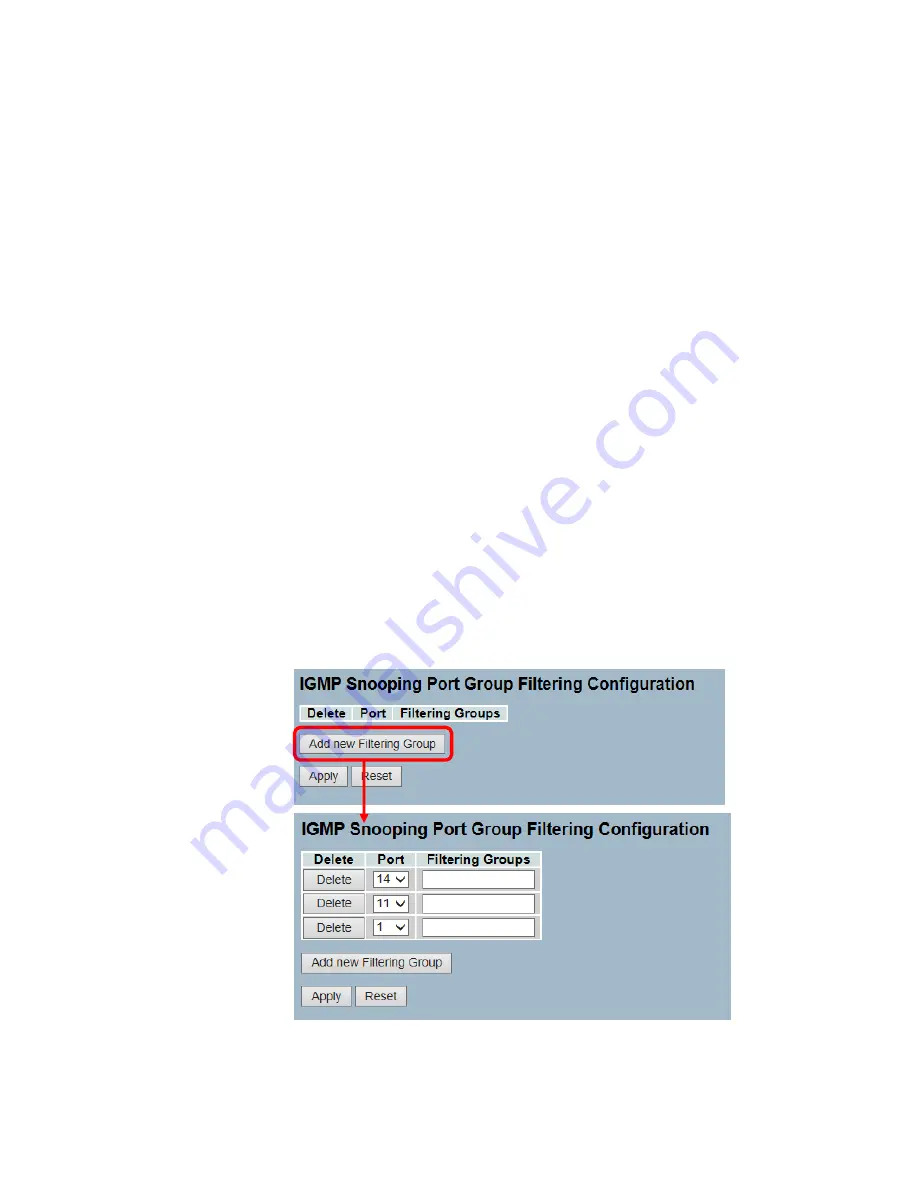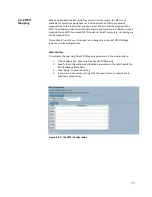
93
3-5.3 Port Group
Filtering
The section describes how to set the “IGMP Port Group Filtering”. With the IGMP
filtering feature, a user can exert this type of control. In some network application
environments, as like the metropolitan or multiple-dwelling unit (MDU) installations,
a user might want to control the multicast groups to which a user on a switch port
can belong. It allows the user to control the distribution of multicast services, such
as IP/TV, based on some type of subscription or service plan.
With this feature, you can filter multicast joins on a per-port basis by configuring IP
multicast profiles and associating them with individual switch ports. An IGMP profile
can contain one or more multicast groups and specifies whether access to the group
is permitted or denied. If an IGMP profile denying access to a multicast group is
applied to a switch port, the IGMP join report requesting the stream of IP multicast
traffic is dropped, and the port is not allowed to receive IP multicast traffic from that
group. If the filtering action permits access to the multicast group, the IGMP report
from the port is forwarded for normal processing.
IGMP filtering controls only IGMP membership join reports and has no relationship
to the function that directs the forwarding of IP multicast traffic.
Web Interface
To configure the IGMP Snooping Port Group Configuration in the web interface:
1.
Click Configuration, IGMP Snooping, then Port Group Filtering.
2.
Click “Add New Filtering Group”.
3.
Scroll the port to enable the “Port Group Filtering”. Specify the “Filtering
Groups” in the blank field.
4.
Click “Apply” to save the setting.
5.
If you want to cancel the setting, click the reset button to revert back to
previously saved values.
Figure 3-5.3: The IGMP Snooping Port Group Filtering Configuration.
















































